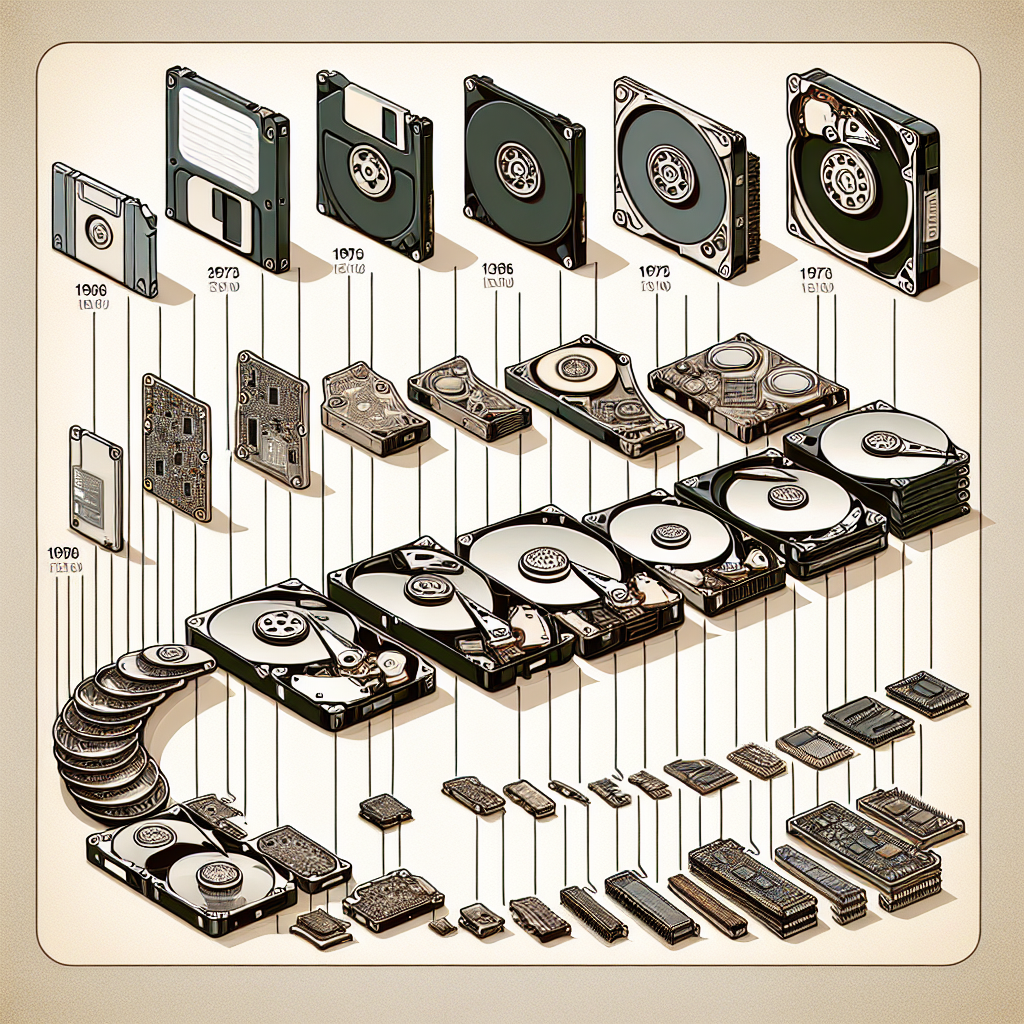Your cart is currently empty!
The Evolution of Hard Disk Drives: From Floppy Disks to Solid State Drives

The Evolution of Hard Disk Drives: From Floppy Disks to Solid State Drives
The evolution of hard disk drives (HDDs) has been a fascinating journey that has revolutionized the way we store and access data. From the early days of floppy disks to the modern solid state drives (SSDs), HDDs have come a long way in terms of storage capacity, speed, and reliability.
The first commercially available HDD was the IBM 350 Disk Storage Unit, which was introduced in 1956. This massive device had a storage capacity of just 3.75 MB and was about the size of two refrigerators. It used a series of spinning disks coated with magnetic material to store data, a technology that would become the foundation for all future HDDs.
In the 1980s, floppy disks became popular as a portable storage solution for personal computers. These flexible plastic disks had a storage capacity of just 1.44 MB and were prone to data corruption and physical damage. Despite their limitations, floppy disks were widely used until the late 1990s when they were replaced by more reliable and higher-capacity HDDs.
The introduction of the first solid state drives (SSDs) in the early 2000s marked a major milestone in the evolution of HDDs. Unlike traditional HDDs, SSDs use flash memory chips to store data, making them faster, more reliable, and more energy-efficient. SSDs also have a smaller form factor and are less prone to physical damage, making them ideal for portable devices like laptops and smartphones.
Today, SSDs have largely replaced traditional HDDs in many applications, thanks to their superior performance and reliability. SSDs can achieve read and write speeds that are up to ten times faster than HDDs, making them ideal for gaming, video editing, and other demanding tasks. SSDs also have a longer lifespan and consume less power, making them a greener alternative to traditional HDDs.
Despite the rise of SSDs, traditional HDDs still have a place in the market, especially for applications that require large storage capacities at a lower cost. HDDs continue to be used in data centers, servers, and other high-capacity storage solutions where cost per gigabyte is a critical factor.
The evolution of hard disk drives from floppy disks to solid state drives has been a testament to the ingenuity and innovation of the technology industry. As we continue to demand faster, more reliable, and more efficient storage solutions, it is exciting to think about what the future holds for HDDs and the next generation of storage technologies.

Leave a Reply